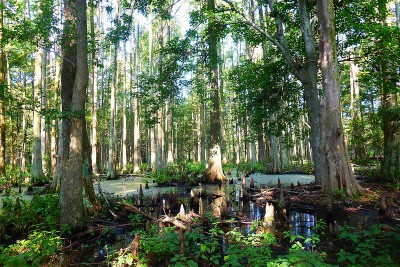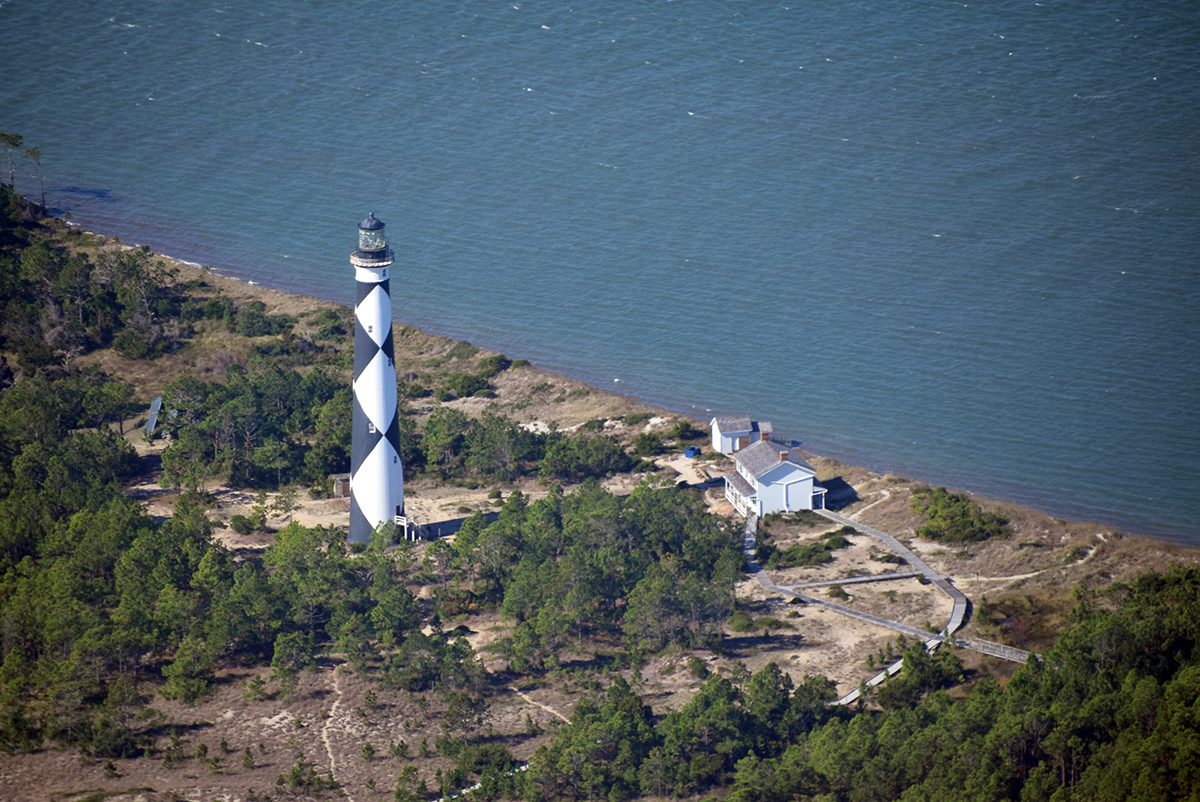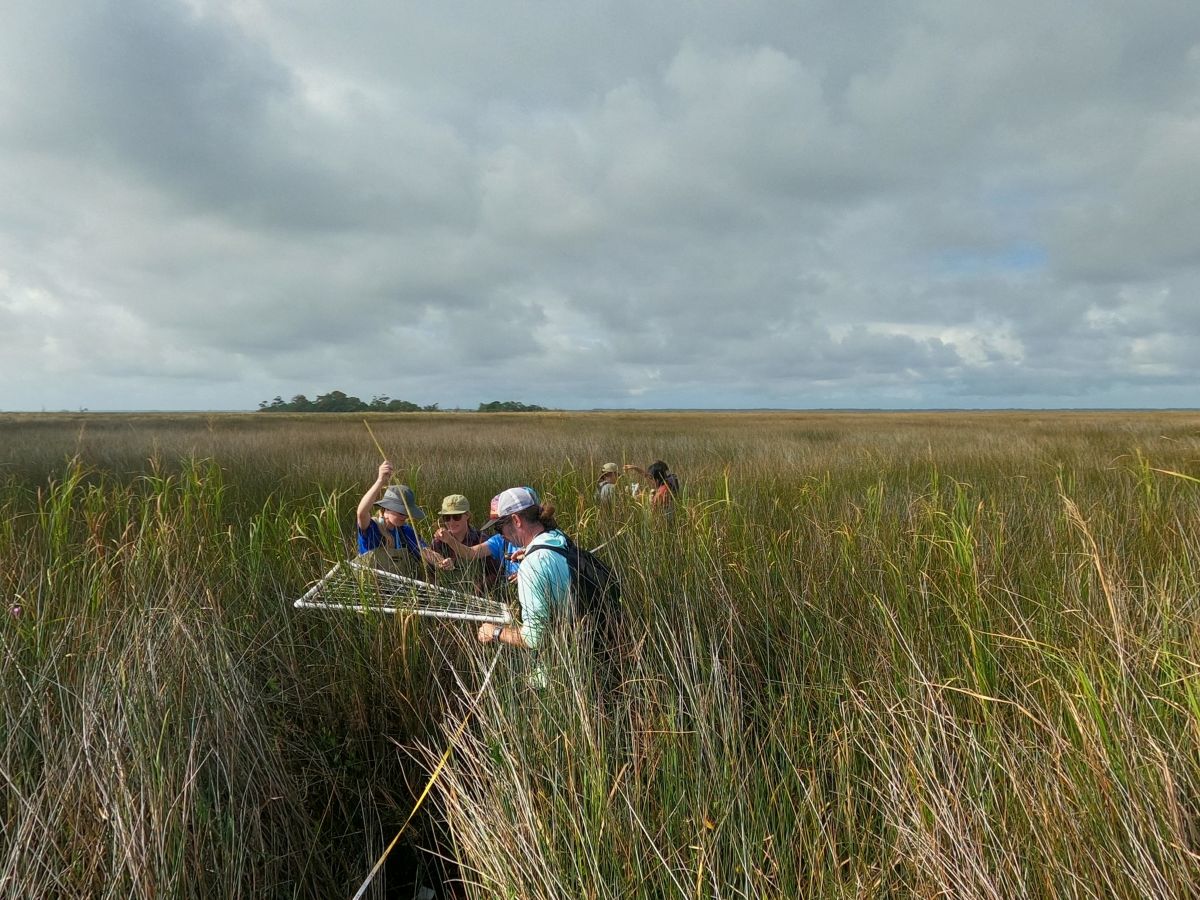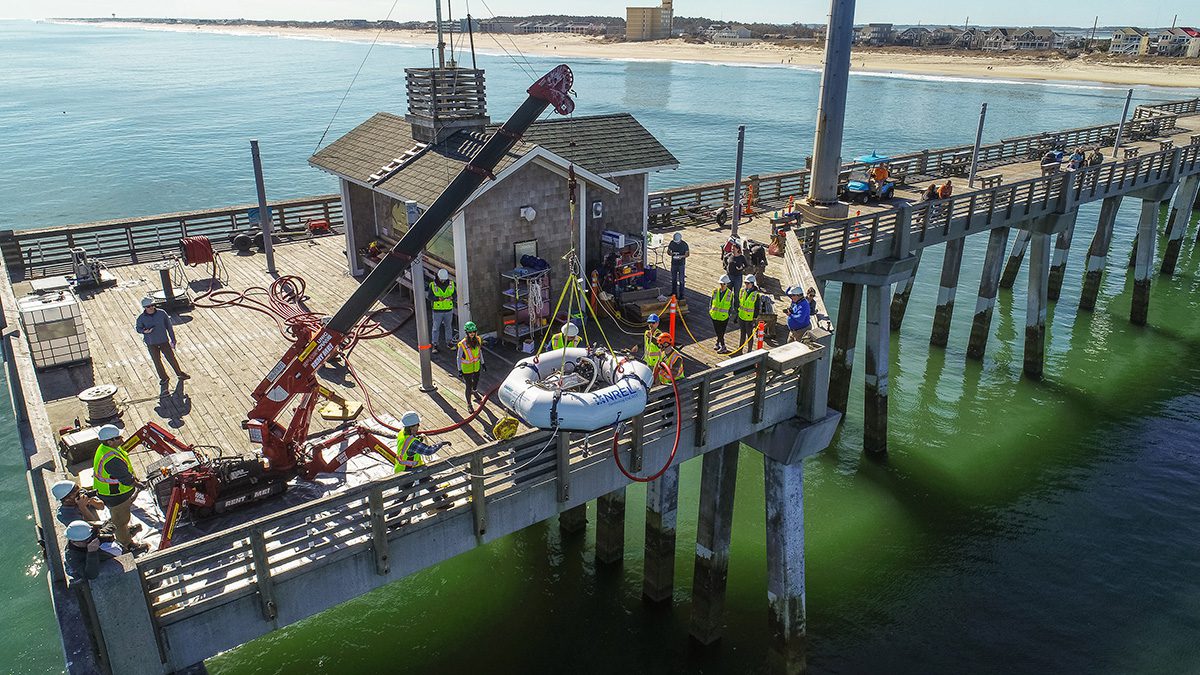Last of three parts.
As saltwater moves increasingly farther into North Carolina’s coastal plain, there will be changes to the landscape that we can see, like dead-standing trees, and many that we cannot. The quality of the water, the nutrients in the soil and the exchange of greenhouse gasses will all be affected.
Supporter Spotlight
Five researchers have begun a five-year, $1.5 million dollar study to project when and how these changes may unfold in order to help people prepare for what’s ahead.
The research will take place on the peninsula between Albemarle and Pamlico sounds, a region sculpted by a long history of farming. There, the forests and the crops closest to the sounds and creeks have stopped growing and started dying. They can’t seem to handle to the encroaching saltwater. Scientists call this landward movement of saltwater into the surface water and soil “saltwater intrusion.”

Marcelo Ardón-Sayao is an ecologist and biochemist in the biology department at East Carolina University. He’s one of the research project’s principal investigators. “[Saltwater intrusion] is going to be bad for the farms because it decreases their yield,” says Ardón-Sayao. “It could also be bad for the downstream estuaries because it could release a lot of the fertilizer that has been building up in the soil.”
He explains why. The soil of the Albemarle-Pamlico peninsula is rich with nitrogen and phosphorus because of fertilizers used by farmers over many generations. These nutrients fuel plant growth, which is why the farmers use them. They also trigger algal blooms if too much nitrogen and phosphorus leak into the surrounding water. When the short-lived algae die, they deplete oxygen in the water, suffocating fish. Scientists call this “hypoxia.” Fishermen have a more fitting name: dead water.
Wetlands, then, are important because of their ability to improve water quality by retaining these nutrients in their soil, Ardón-Sayao explains. That is, until there’s too much saltwater. Then just the opposite happens, he says.
Supporter Spotlight
“So one of the things that we’ve found is that when these coastal wetlands, primarily the freshwater wetlands, when they start experiencing saltwater their ability to retain and transform nutrients goes down,” he says. “Wetlands, which can be a nitrogen sink, can actually turn into a nitrogen source, so they can release nitrogen. The same thing with phosphorus.”

This release makes it harder for plants to retain those nutrients essential for growing. It’s one reason too much saltwater slows the growth of most plants. The other is stress, says Ardón-Sayao, because salt draws water out of plant cells.
“The salinity itself is also harmful for the crops because it stresses them out. Even though you might have a lot of water, if that water is salty for plants it’s almost the same as if there was no water because it causes osmotic stress, so they actually end up losing water.
“So just having the salinity is harmful to the crops, but it is also harmful in the sense that you lose some of the nutrients that were in the soil as well,” he says.
One thing Ardón-Sayao will be investigating is the timing of nutrient release from the soil once it’s exposed to saltwater. “Is it something that happens for only a couple of years when you have saltwater intrusion to these systems — do you basically just release all the nutrients that are there and then it goes down — or is it going to be a prolonged problem for a long time?” He asks.
Farming isn’t the only traditional occupation at risk in the Albemarle-Pamlico region. Historically, timber harvesting was one of the region’s greatest economic drivers and is still an important one today.
Another of the project’s principal investigators, Justin Wright, is studying the response time of Eastern North Carolina’s trees to saltwater intrusion. Wright is an assistant professor in the biology department at Duke University’s Nicholas School of the Environment.

“Timber is a tough industry because you have to plan 15, 20 years down the road when you’re planting the trees that you’re going to harvest,” Wright says. “And, if you’re planting loblolly pine today and have an expectation that it’s going to be a much saltier environment 15 years down the road, that’s going to change the economics of the decisions of what kind of trees you should be planting.”
Will it make a difference if bald cypress trees, for example, are exposed to saltwater for a short amount a time versus a longer one? And, once they are exposed, how long does it take before we begin to see responses? These are some of the unknowns Wright will be researching.
“We’ll measure whatever (trees) we’ll see,” he says, but he’ll be focusing on trees important to the timber industry and people’s interests, like loblolly pine and bald cypress.
“We’re really interested in making sure that this work is relevant, not just for the scientists but for the people that are trying to live and work in this landscape,” Wright says.

Then, the researchers will focus on an aspect of the project that affects us all: the greenhouse gases. They are the heat-trapping gases, like carbon dioxide and methane, that are warming the planet and, consequently, triggering a cascade of other effects. Emily Bernhardt, a biochemistry professor at Duke University, will join Ardón-Sayao in researching how saltwater intrusion affects these emissions.
In general, scientists think that saltwater intrusion decreases the ability of wetlands to store carbon, says Ardón-Sayao. It can kill plants, which absorb carbon dioxide from the atmosphere. Saltwater also will stimulate microbes in the soil, he explains. The microbes decompose organic matter in the soil. The carbon dioxide in the organic material is then released into the atmosphere, Ardon-Sayao says.
“With the greenhouse gasses,” he says, “there’s this idea that [saltwater intrusion] could potentially increase carbon dioxide, [and] there’s also some evidence that it could decrease methane.”
Methane is over 20 times more potent than carbon dioxide in trapping heat in the atmosphere.
The researchers are not yet certain how the exchange of greenhouse gases, between both plants and soil to the atmosphere, will balance out as saltwater moves inland and stays longer on the ground. They hope to learn over the next five years when the research project wraps up.







